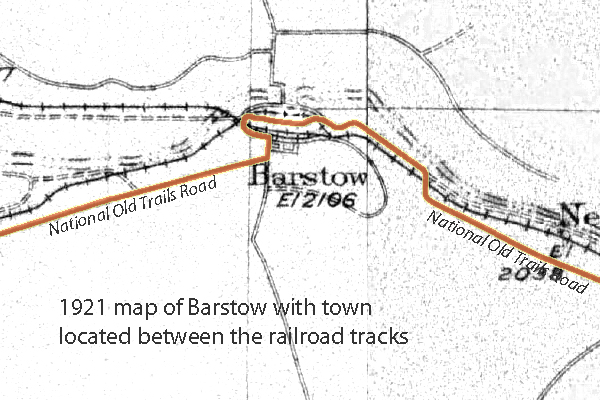Timeline
Prehistoric
- Indigenous Mojave and desert tribes lived in the region for thousands of years, traveling along the Mojave River and ancient trade routes.
1840s–1860s
- Travelers along the Old Spanish Trail and Mormon Road camped at spots near Barstow such as Grapevines and Fish Ponds.
- 1860–1871: Camp Cady, east of Barstow, served as a U.S. Army post protecting travelers along the Mojave Road.
1860s–1880s
- Silver mining boomed in nearby Calico and Daggett.
- Settlement first appeared under names Fishpond and Waterman Junction (named for Robert Waterman, a silver mine owner).
1880s
- 1882–1884: Southern Pacific Railroad built to Daggett, later taken over by the Atchison, Topeka & Santa Fe Railway.
- 1886: Town officially named Barstow after William Barstow Strong, ATSF president. Became a major railway division point.
Early 1900s
- 1911: Casa del Desierto (Harvey House) opened, providing elegant lodging and meals to rail passengers.
- 1925: On July 4, the business district was moved about a quarter mile to align better with the highway and railroad.
Route 66 and World War II
- 1920s–1940s: Barstow thrived as a stop on Route 66.
- 1942: Marine Corps Logistics Base established, supporting military logistics during World War II.
Postwar era
- 1958: Goldstone Deep Space Communications Complex established nearby as part of NASA’s Deep Space Network.
- 1960: Barstow Community College founded.
Preservation and modern history
- 1975: Casa del Desierto listed on the National Register of Historic Places.
- 1976: Designated as a California Historical Landmark.
- 1990s: Harvey House restored after earthquake damage, repurposed to house the Route 66 Mother Road Museum, Western America Railroad Museum, and serve as an Amtrak station. (2025)
